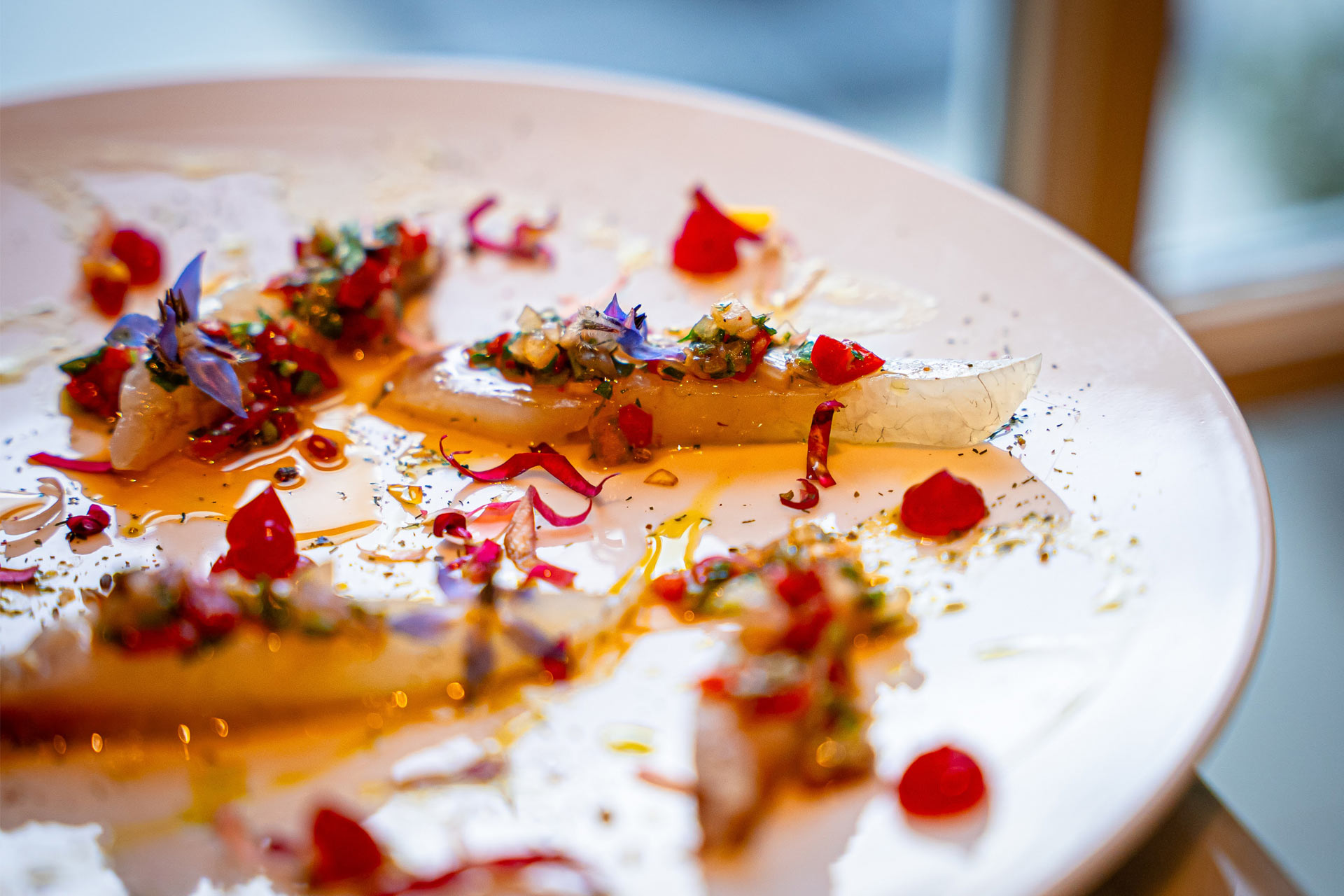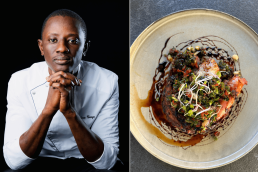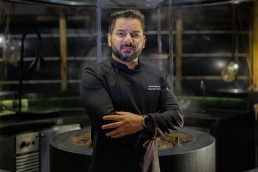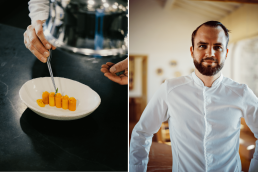Interview: Badara Gueye on his culinary vision at Château de Candie
After five years at the helm of La Cantine, the bistronomic restaurant within the historic Château de Candie in Chambéry, Badara Gueye emerges as a key figure in the transformation of the 14th-century château-hotel.
The Senegalese chef and painter joined the property in the wake of the pandemic and quickly established a distinctive culinary identity rooted in seasonality, sustainability and creative cross-culturalism.
Gueye champions a local sourcing philosophy, working closely with producers around the Alps. His evolving monthly menus highlight regional ingredients such as fish from Lake Geneva or Lake Bourget, enhanced by global touches and West African influences. Think vibrant flavours like hibiscus, tamarind and mango.
In our interview, he shares insights into this culinary vision, the challenges and opportunities facing today’s hospitality industry, and his plans to open an eco-conscious, zero-waste restaurant.
When did you first fall in love with cooking?
When I was a student, I had to find work during the summer holiday and I was hired as a dishwasher in a French restaurant in Dakar. From the very first days, I was overwhelmed by the unfamiliar smells and tastes and the sharp contrast between French and Senegalese cuisine. I would lean over and sniff every dish the servers brought back to be washed at the sink, curious like a cat. That’s when my love for cooking was born.
How would you describe your culinary style?
As soon as I arrived at Château de Candie, my plan was to create a cuisine that reflects who I am: a mixed, cross-cultural cuisine that expresses my personality, that tells the story of my dreams, my doubts and my journeys. For example, seasoning foie gras from the Southwest with hibiscus flowers, adding a hint of flavour with ginger or tamarind.
What is your culinary vision for the menu at Château de Candie?
My culinary vision can be summed up in three words: experimentation, emotion and seasonality. I create bold combinations to see if they appeal to me and my team, or, even more importantly, if they spark emotion in me.
If they do, I know they’ll resonate with others as well. Every month, I consult with a horticulturist to find out which fruits or vegetables are in their prime and which have lost their flavour because the season has ended. I place great importance on seasonality, and all my ingredients come from short supply chains.
Do you have a favourite dish on the menu?
My favourite dish on the menu is the grilled octopus leg: a dish thoughtfully created, affordable to make, yet highly appreciated by most of our customers. It’s a dish with unique flavours, slow-cooked for up to 11 hours. The notes of the sea take me back to my childhood.
What is the most important lesson you’ve learned during your career?
Early in my career, at one point I was recruited to work aboard an oil tanker, cooking for the entire crew at sea for six months. That experience was one of the defining moments of my career, when I learned a great deal about myself and the people around me. The most important lesson I took from it was resilience—something that now helps me manage both stress and solitude.

What are the biggest challenges faced by the hospitality sector at the moment, and how are you tackling them?
Today, the hospitality industry is facing more challenges than ever, from profitability and recruitment, to maintaining an online reputation, as well as the wider social and economic context. That is why it’s so important to diversify, to innovate each year and to remain confident. At the same time, we must offer alternatives by strongly fighting against food waste in order to reduce it.
After the Covid period, the sector proved its resilience, and there was a performance surge between 2022 and 2023. I count myself among the optimists. I would say the hospitality industry is a bit like disco: at times it can be tragic, but the rhythm always wins.
Which chefs have inspired you during your career?
A god of cuisine, Pierre Gagnaire is a three-Michelin-starred chef, who brings contemporary art into his cooking. He creates dishes that are themselves works of art. An approach perfectly aligned with my own vision of cuisine, where dishes should be figurative in form or abstract in essence. What’s more, he sets no limits when it comes to combining unexpected ingredients, and that is my daily guiding principle as well.
Which is your approach to sustainability?
Sensitivity to costs and ingredients. I aim to use products in their entirety and food waste is one of my primary concerns. I also enjoy working with seasonal products, but above all, I focus on their origin and prioritise short supply chains. It’s about an eco-responsible cuisine, grounded in ethics and sincerity toward nature.
What would you like your next project to be?
My vision is to open a thoughtfully designed, eco-responsible restaurant, born from the observation that fine dining establishments can waste up to 30% of high-quality ingredients. My ambition is to rethink gastronomy: to craft a menu that is both refined and responsible, where culinary pleasure goes hand in hand with zero waste.
I have developed a fierce determination to become an advocate for better eating and more thoughtful consumption. In my kitchen, nothing is wasted: vegetable peels are transformed into dishes, condiments are produced in-house, sourcing is local and seasonal, and waste is carefully sorted. I envision a creative “ping-pong” between bistro and gastronomic menus, each enriching the other.
Having known poverty and the reality of going hungry, I carry with me a deep commitment: to fight against food waste and to give meaning back to the act of eating.
What is your favourite dish, and who cooks it?
Frogs’ legs with parsley and garlic; so simple, just like pan-seared shrimp. A subtle flavour, easy to prepare, although the product is often hard to find. And it’s a real treat when my wife makes it.




